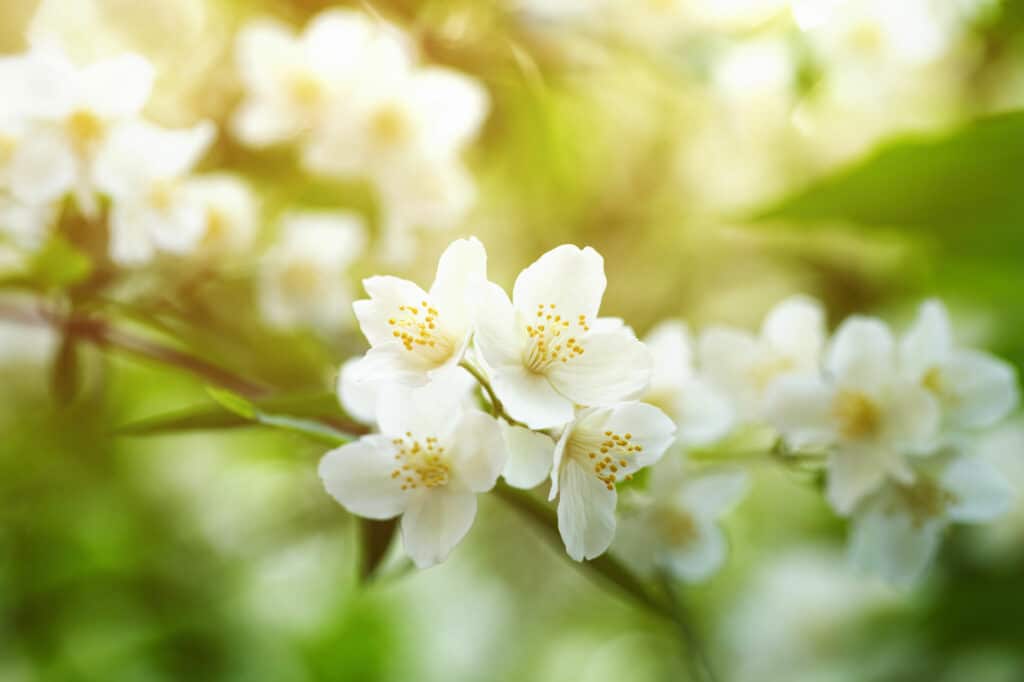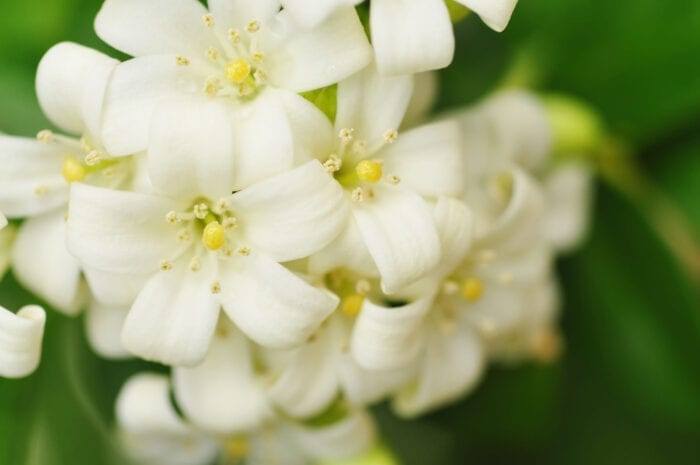September, 2023
Jasmin Grandiflorum
The Jasmin Grandiflorum season in India was slightly delayed this year, though overall growing conditions remain stable. Rainfall and temperatures are ideal for flower production, and weather remains comparable to previous seasons.
However, there is currently a preference for local farmers to cultivate less labor-intensive crops such as vegetables. The income provided by vegetable farming has provided a higher return on investment in recent years, as prices for food crops around the world remain high. For many farmers, jasmin is now seen as a less remunerative botanical that requires more harvesting labor, careful attention, and overall time invested than other crops.

Based on early estimates, it seems as though the production of jasmin flowers in the Coimbatore region of India will decline by around 10% compared to last season. While the climate remains ideal for jasmin production, raw material prices have observed a significant increase in cost (close to 15%). Local farming networks have also insisted on higher wages for flower harvesting and other agricultural activities. In order to retain their current network of jasmin growers, many flower processors have increased their prices paid for raw materials, leading to further cost increases for end users.
Jasmin Sambac
Production of Jasmin Sambac is higher than previous seasons, and overall demand for the material remains very strong. Less than 5% of jasmin sambac flowers produced in India are utilized within the fragrance industry: around 95% are used in public activities such as weddings, festivals, and everyday rituals at local temples.
With markets now fully open in India, festivals are being celebrated at levels similar to pre-COVID: large weddings are common, and places of worship are full once again. This trend towards large social gatherings has caused the demand for jasmin sambac to increase exponentially over recent months. Even as production continues to improve, unprecedented demand for flowers has greatly impacted overall supply, and we expect many jasmin producers are racing to meet this increasing demand.
Despite such a massive increase in usage, prices for jasmin sambac remain relatively unchanged when compared to 2022. Overall production and flower growth remains strong, and prices are being held at rates comparable to previous seasons.
Jasmin Concrete & Jasmin Absolute
The season for jasmin absolute in Egypt runs from June through October, sometimes stretching into November depending on various regional conditions. The highest quality material is often produced during July, August, and September, when the flowers reach their highest concentration of essential oils. Jasmin flowers are collected daily, from very early morning until sunrise, and then rapidly transported to factories for immediate processing.
Jasmin concrete is produced by soaking the flowers in a solvent across four separate periods of time, then again overnight. Afterwards, the solvent is removed, and the concrete is what remains. One metric ton of jasmin flowers can yield about 2.5 – 3 kilos of concrete, and the yield of absolute from this concrete is around 52 – 56%. As one might imagine, this is a very time consuming and labor intensive process from beginning to end. On an average year, Egypt can produce around 7500 kilos of jasmin concrete.
Posted In:
Feature Articles - Market Report - Egypt - India - Jasmin Absolute - Jasmin Concrete - Jasmin Grandiflorum - Jasmin Market Update - Jasmin Oil - Jasmin Production Season - Jasmin Sambac - Jasmin Season
